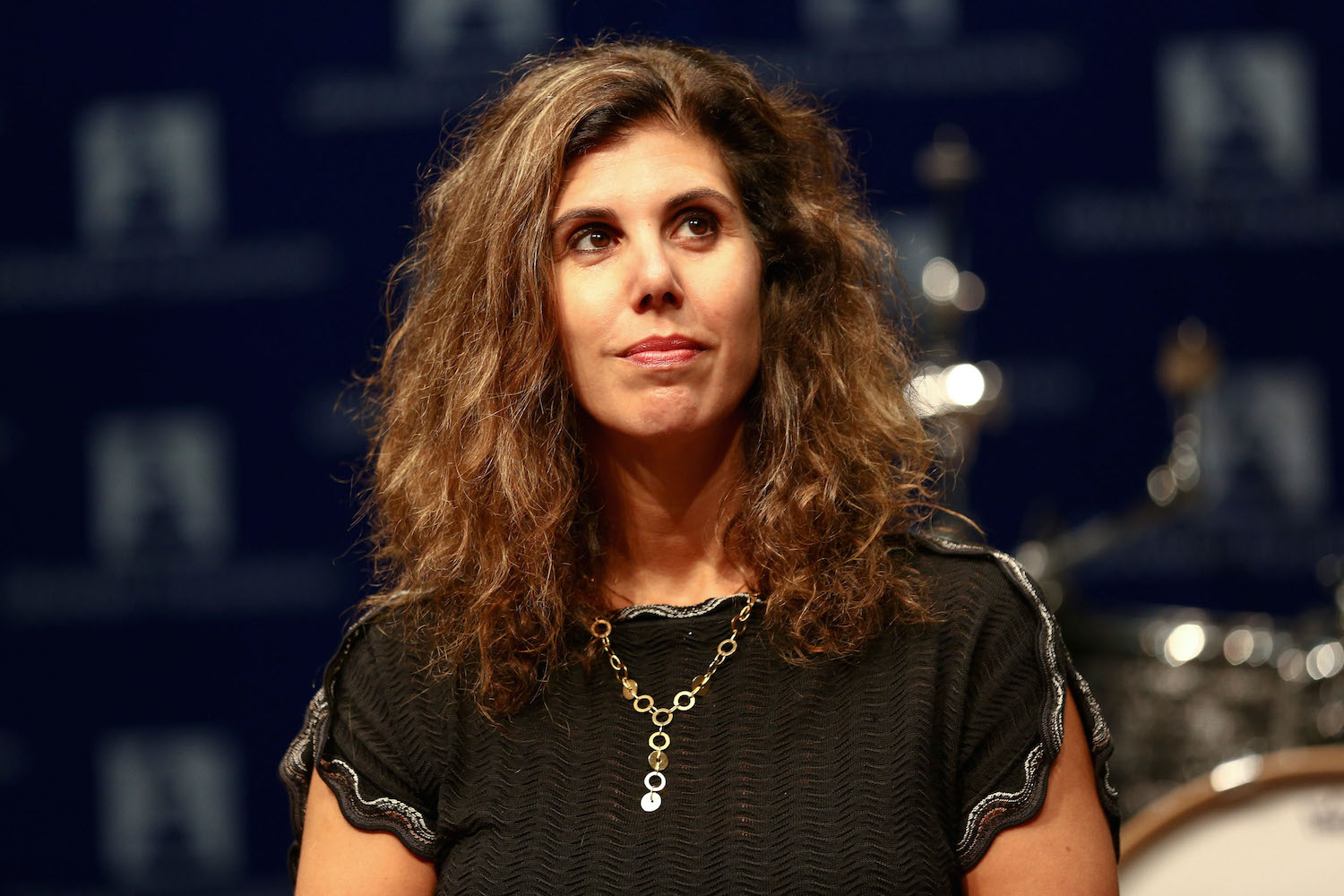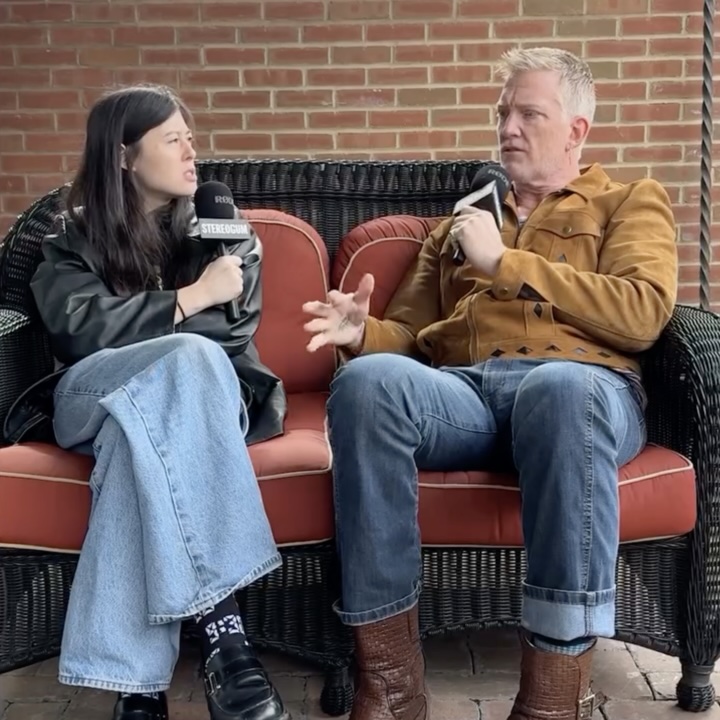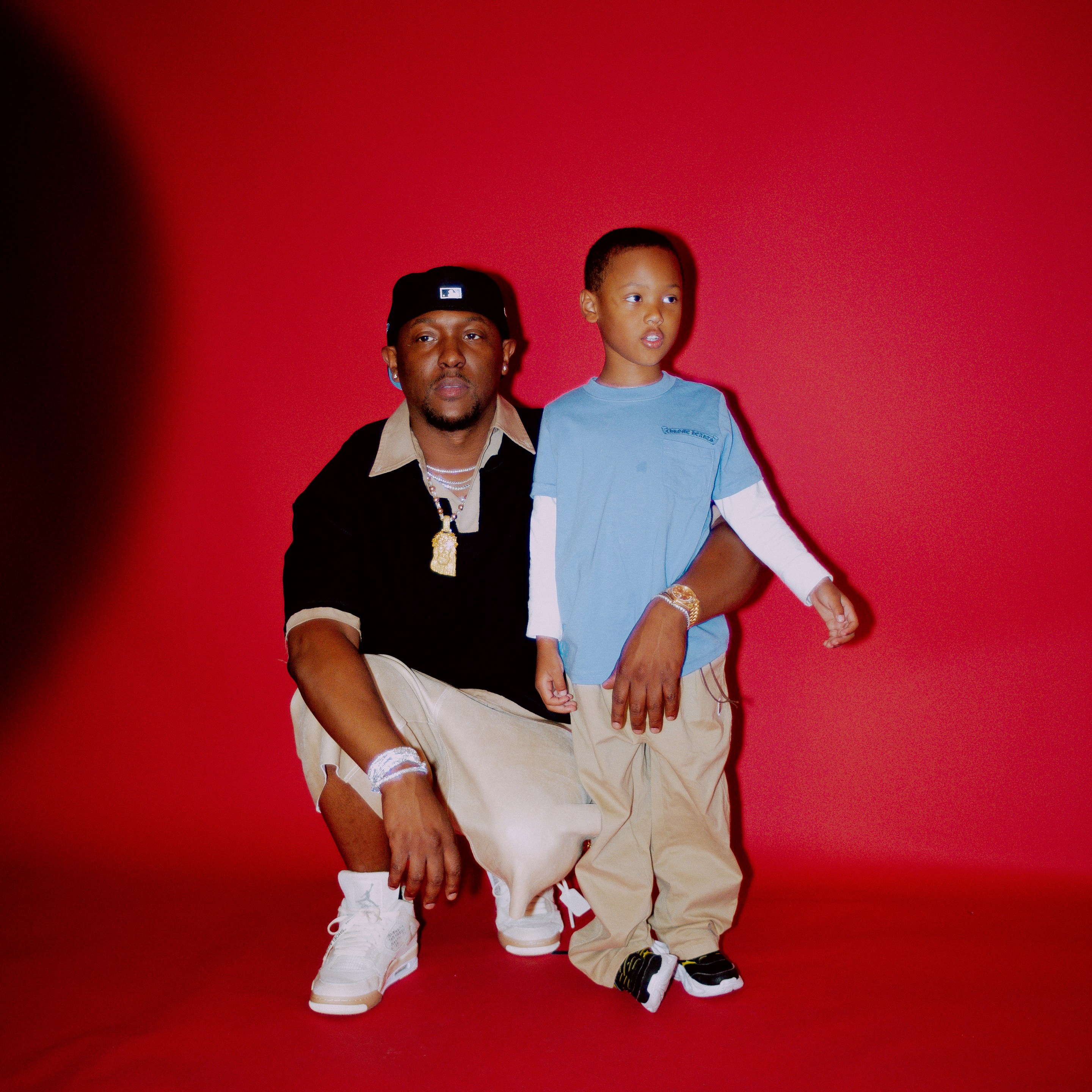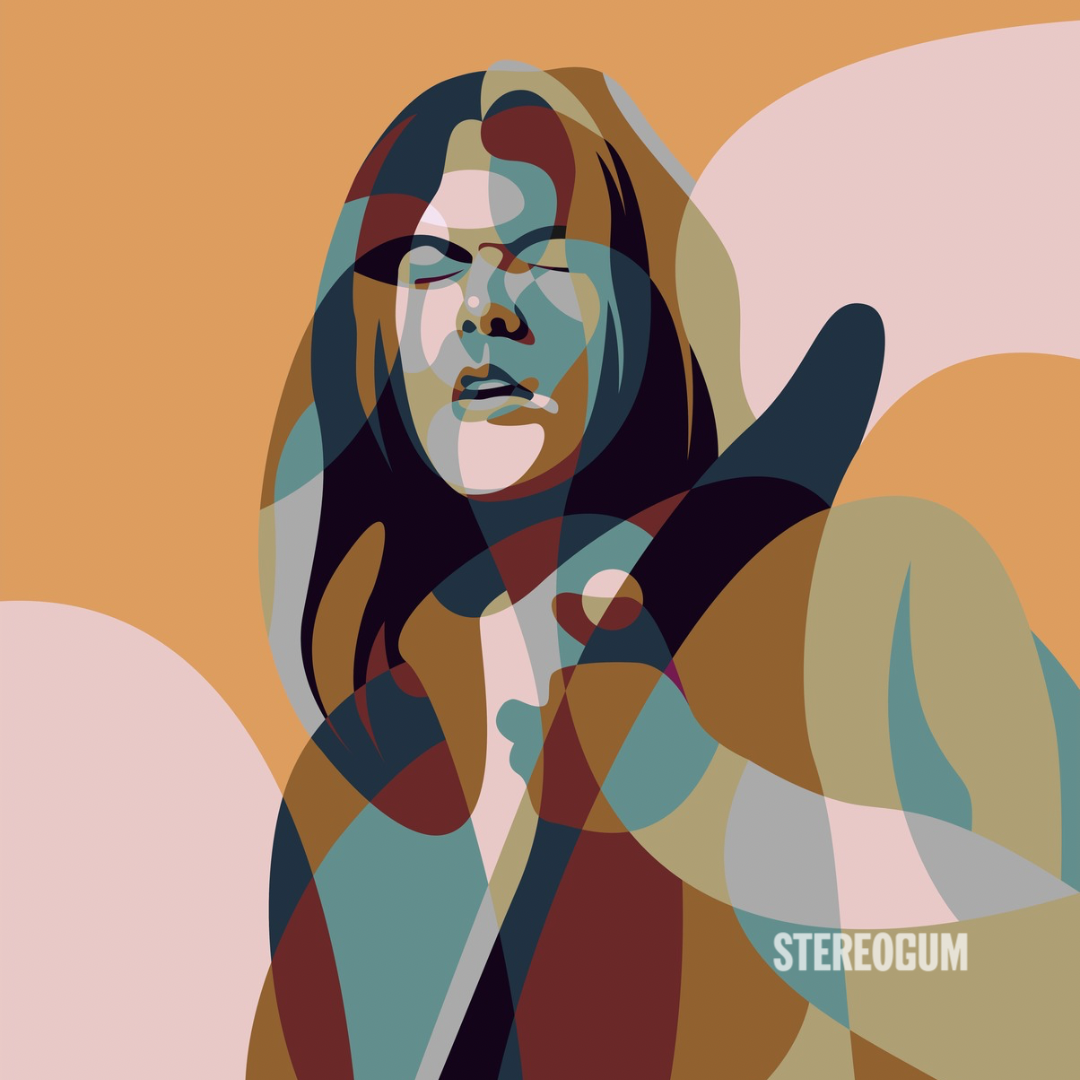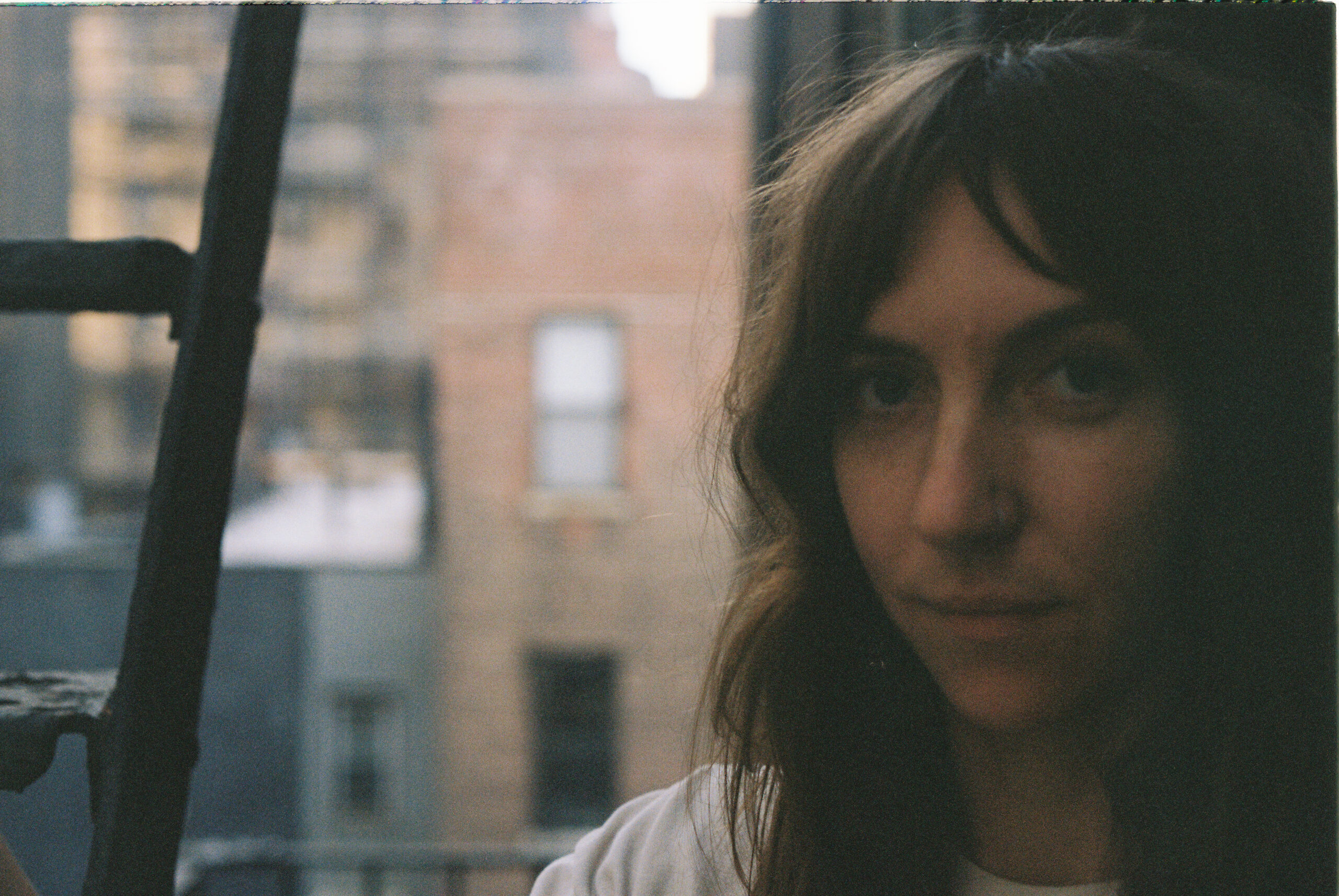Since she began working in TV music supervision in the middle of the 1990s, Alex Patsavas has built a resume that runs from Grey's Anatomy to Mad Men to The O.C. to Gossip Girl. Those latter two popped up on this site quite a bit back in the day, because they were shows featuring the kinds of bands that sites like Stereogum were covering: the Walkmen, Modest Mouse, Death Cab For Cutie, Sonic Youth. That's just one of Patsavas' calling cards -- the fact that she's one of the people who brought indie bands to mainstream TV, and consequently, to the mainstream. The Astronaut Wives Club, a new show featuring Patsavas' music supervision, is premiering tonight on ABC. Adapted by Patsavas' frequent collaborator, screenwriter/producer Stephanie Savage, from a book of the same name, the show follows a group of seven women, the wives of the first men chosen by NASA to train as astronauts through the 1960s. We talked to Patsavas about The Astronaut Wives Club's use of contemporary music in a period setting, the legacy of the other shows she's worked on, and the ins and outs of music supervision as a job.
STEREOGUM: Let's start with The Astronaut Wives Club. First off, you worked on Mad Men and this is another '60s period drama, but it uses contemporary music. How did that decision come up? Is that how you wanted to approach it or is that something the showrunners came to you with?
PATSAVAS: This particular 10-episode drama was produced by Fake Empire and created by Stephanie Savage, and of course I've been working with Fake Empire for a long time now, with The O.C., Gossip Girl, Chuck, The Carrie Diaries, as well as others. So I've been lucky enough to work with Stephanie for a long, long time and I know what she likes. She really loves cool new music, but of course she adapted a best-selling book, The Astronaut Wives Club, which does take place from 1960 to 1970 and focuses on this group of women. We talked about it, I got the pilot script, and because it was a series that had a conclusion, you know, it's a rare opportunity. Most episodic television, you sort of get a script at a time. But with this show, because it was going to be a 10-episode show, I was able to read at least an outline of all the scripts, which is interesting for a TV show because you know where it's going. And that's a pretty rare; that only happens if there's a finite number of episodes. So we talked about it, and she really wanted a mix of classic '60s songs and new songs. There are some covers of '60s classics, classic '60s songs by contemporary artists, and so it really is a mix.
STEREOGUM: When you're doing this mixture of contemporary and classic, how do you start curating the contemporary stuff? How far do you push that in terms of how non-'60s something can sound? Are you ever worried about it --
PATSAVAS: Right, like taking you out of [the scene]?
STEREOGUM: Yeah.
PATSAVAS: I hear what you're saying. I think because we had such special, specific subject matter, I went out for '60s covers. I have a great group of managers and bands and publishers and agents that I turn to whenever I have a special project. I went out and asked for covers of songs, '60 to '70, by sorta indie rock or alternative artists. We had a special opportunity to go out for certain space, moon, and star songs because of the subject matter. So that was a way to start. You definitely feel a throughline and I think that the songs we selected feel like they're inspired by the '60s one way or another. Of course the '60s were such a huge decade for music with everything from folk and country to, of course, rock 'n' roll. There's a lot of ways to take inspiration. It's not so straight ahead as maybe the '40s were. That pallette really expanded in the '60s, so we had a lot of ways to go with it.
[videoembed size="full_width" alignment="center"][/videoembed]
STEREOGUM: Is it different trying to curate a period piece for a big network like ABC as opposed to something like Mad Men, which started as a niche kind of thing?
PATSAVAS: No, I mean music supervision is always ... you're really helping to tell the story. It's story-driven. It's up to Stephanie on how she wanted to tell the story, and how much music vs. score. Music supervisors are part of that creative team -- the costumer, the production designer, the hair stylist, we all sort of come together to try to tell the stories that the creator wants to tell.
STEREOGUM: We published an essay two years ago where one of our writers talked about how The O.C. was sort of the beginning of indie music really having a presence on mainstream TV. What was your experience like bringing some of those artists onto TV and using some of those songs on the soundtrack? Did you get pushback on that?
PATSAVAS: Well, The O.C. started in 2003. I came on around the eighth episode and I was on the show until it ended. And, no, I mean, [showrunner] Josh Schwartz and Stephanie really loved indie music. They went and saw bands. Josh, in one of the subsequent seasons, created the Bait Shop to sort of even more tie [this music] into the story. All the characters listened to these bands. I felt like it was their age and that they were in California. I felt like it was easy to tie indie rock into the story and it never felt forced to me. That was a decision that we made and something that was fun to do. At the time we tried a lot of different things. We did a lot of covers. We had the Killers, Death Cab, etc. at the Bait Shop, and then also did some interesting things with a "Beckisode," some Coldplay, some Beastie Boys. Music was just always part of the ethos there. It was a terrific, fun project for me.
STEREOGUM: It also led to a lot of indie bands having their mainstream moments and probably played a role with indie becoming the mainstream form of rock music. Do you have any thoughts on what the decade looked like as it went on and what happened with some of those bands?
PATSAVAS: I've been music supervising for 20 years. I started in low-budget film, with Roger Corman in the mid '90s. So that's where I came from, and when I had the opportunity to do a show like The O.C., it was the music that I loved personally, so that was fun to do. I don't think it was self-conscious at all, the kinds of bands we used. I don't think we set out to out-hip ourselves. It was just right for those kids and that story. I think some of the bands, like the Killers ... I remember hearing a Killers demo on the way to Coachella very early on, and that band seemed like we were just gonna be part of a much bigger story. I just happened to hear it early, but that band was gonna connect on a very large level. That was no surprise. I think, in other ways, the music business was changing. I remember it was one of the first shows that we had the list of songs every night, which took a lot of coordination back then, because it wasn't so immediate to be able to put up stuff on the site. It just took a little more planning, and Warner Bros. Records, which was our soundtrack partner, would post the links if they were available and scene descriptions every time the show aired. I think it became a force of discovery for fans, and that was a different way of finding music than before, and in a pretty organized way.
[videoembed size="full_width" alignment="center"][/videoembed]
STEREOGUM: Another thing that was a hallmark through The O.C. and Gossip Girl is that you worked with cameos quite a bit. Has there ever been, on either show, one you were really psyched about, that you kinda felt this was sort of your coup, getting this band on a particular show?
PATSAVAS: A cameo or on-camera appearance is such an interesting thing because so many schedules [have to align] and it's pretty complex stuff actually to try. A lot of bands that are doing an on-camera appearance are in the middle of a tour or don't expect that they're going to be picked up by a van at 6:30 in the morning to be on camera at 9 in the morning. TV time and rock 'n' roll time are definitely different, so that's always funny. And to be filmed over and over with dialogue, and the dropping out of the song, it's pretty complicated. But, gosh, I feel like proud of so many of the bands that we've had on along the way. You know, on The O.C., I definitely loved The Killers' appearance, and Modest Mouse. Fake Empire of course, Josh and Stephanie, also produced Gossip Girl, and we expanded the pallette to include a lot of New York music, a lot of pop music. So, Sonic Youth. No Doubt appeared on an episode of Gossip Girl as a band called Snowed Out, which I thought was super clever. They did an Adam Ant cover, "Stand And Deliver." There's a lot of them. Florence + The Machine, of course, on Gossip Girl, as well.
[videoembed size="full_width" alignment="center"][/videoembed]
STEREOGUM: Was there ever one you were really dying to get and didn't manage to do it?
PATSAVAS: Gosh ... I'm sure. I sort of focus on today's problems rather than worry about what didn't happen in the past. I'm sure we were going after bands that, for whatever reasons, did not work. But I felt like we had some great bands on the shows.
STEREOGUM: I remember listening to people like Radiohead and St. Vincent and suddenly seeing them on the Twilight soundtrack and wondering how something like that happened. I was curious about the process of curating those movies' soundtracks, but also the process of commissioning original songs for those soundtracks.
PATSAVAS: Yes, and that was another unique opportunity that I was lucky enough to experience. There were five films, and because it was based off books by Stephenie Meyer -- a really popular, beloved series of books -- and she was really into music, I knew it was going to be a music project and there was already a music culture around it. She was definitely a Muse fan. Each story was different, there were different directors for the movies. Bill Condon did the last two together. The other three had a unique perspective and a unique story. The first movie, we licensed some pre-existing tracks, plus including the Muse track, and created a few things. But once the features started rolling and we realized it was going to be almost a yearly debut of each movie, we had the opportunity to be able to go out and get artists to create new material. Almost all of the rest of the soundtracks included exclusive material and that happened by submissions. Artists might have been fans of the book. Of course, Paramore came in and met with Catherine Hardwicke [the director of the first Twilight movie]. That's something I love to do a lot. I think it really helps, that sort of artist-to-artist relationship. To have a director and a band in the cutting room together reviewing the scene, and then the band can go away and have had a proper conversation and really see the footage, and then create music. We did that a lot over the five movies.
[videoembed size="full_width" alignment="center"][/videoembed]
STEREOGUM: Mad Men had some of the best music cues ever on TV. What was it like to work on that show?
PATSAVAS: I came after the pilot was shot. I stayed on for the entire run of the series and it was super exciting to work on a show that told such an interesting story. [Mad Men creator] Matt [Weiner] was very specific about so many of the cues. He had so many end cues in mind. It was really, really terrific to work on. I was sorry to see it end.
STEREOGUM: I'm really curious about some of the nitty-gritty, daily details of what music supervision looks like as a job. The first basic thing I'm wondering about is: How does one even wind up working in the TV industry but find themselves specifically in music supervision? That's kind of a smaller corner of the field right?
PATSAVAS: Well, I think when I started, it was not a destination, which it is now. It was really when the record business was so strong in the mid-'90s. Fans were replacing their cassettes with CDs, it was sorta pre-file sharing/pre-Napster. This is just when I started, so I was lucky. I helped book a small club in the Midwest where I attended college. I came out to L.A. to work at a talent agency. That did not go that well for me; I was not cut out for it. And then I found myself at BMI and I landed in the film and TV department as an assistant. That was the first time I really understood music supervision was a job. To me, the entire music business was live shows, because that's all I knew. I wasn't really aware that somebody was actually a supervisor. So I got to meet directors and composers, and a friend of mine was directing his first movie for Corman, and that was Caged Heat 3000. I made the leap and worked for the music supervisor at Concorde Films, and that's how I got started. It wasn't something I was really aware of before I worked at BMI. I was a kid who grew up in the '80s in Chicago, so John Hughes was my musical hero. Those movies were all shot in Chicago. He introduced me to so many cool bands and I felt like all the music choices were so seamless and made sense for the characters. I think if I could say anyone is my inspiration it was definitely John Hughes.
[videoembed size="full_width" alignment="center"][/videoembed]
STEREOGUM: Doesn't music supervision include some legal work as much as it would artistic input?
PATSAVAS: I am not a lawyer but I am definitely a negotiator. The nitty-gritty of this job is we are hired to help the showrunner, the creator, the director -- the creatives on the project -- find a signature sound. If I were to come up with what music supervision is, it's finding that signature sound. That signature sound can include every thing from a theme song -- which are not as in fashion as they used to be these days, there are a lot of five-second ones -- but it includes that. Any on-camera performances fall under a music supervisor's jurisdiction. Anything from a band like Modest Mouse to a string quartet playing in the background at a restaurant. Any time you see anything musically driven. If a character hums a song on camera, that is part of the supervisor's job. Expanding from all those on-camera duties would be negotiating rights for every song that is licensed. Rights packages have changed over the years, but they have to be cleared by the masters holder, by the publisher, including the songwriters, and we clear them very specifically. We clear for a certain amount of time, and for specific scene description. The artists are really aware of exactly how their songs are going to be used. In some specific instances, the artist might request footage. You know, if it's somebody who has either been burned in the past by a sync, or just a very important artist where that's part of the process.
STEREOGUM: Do you keep a wish list of songs you want to use in shows at some point? And if so, what are some of the things on your wish list that you haven't found a home yet?
PATSAVAS: There are definitely certain songs. At this point, I sort of listen to music with syncs in mind, and it might not be as specific as a show or an actual scene description, but it's more like a mood. Sometimes some voices work so well. There are very few montages in the world. It's mostly dialogue. It's mostly telling the story and trying not to fight dialogue all the time. I have long lists of songs that I'm waiting to use but not for anything specific. And then you put it into the picture and that great idea might turn the scene into something, like, really wrong. When I read the scripts, I might think about some things, and then when you actually see footage it really does change the tenor of what the scene is and what music might do to it. I think silence is really underused and there's something really powerful about just letting the actors act sometimes.
//
The Astronaut Wives Club premieres 6/18 at 8 PM EST on ABC.
